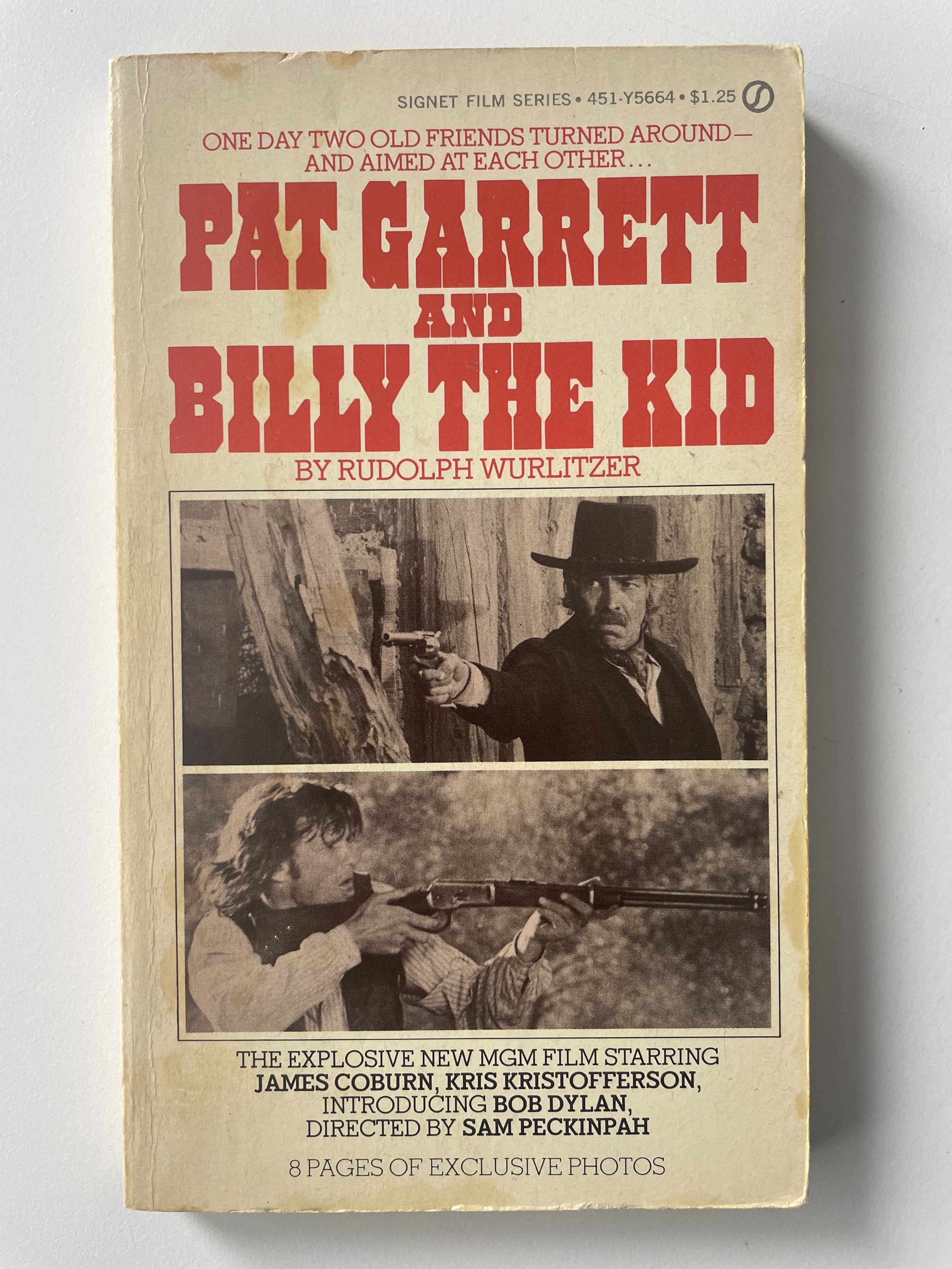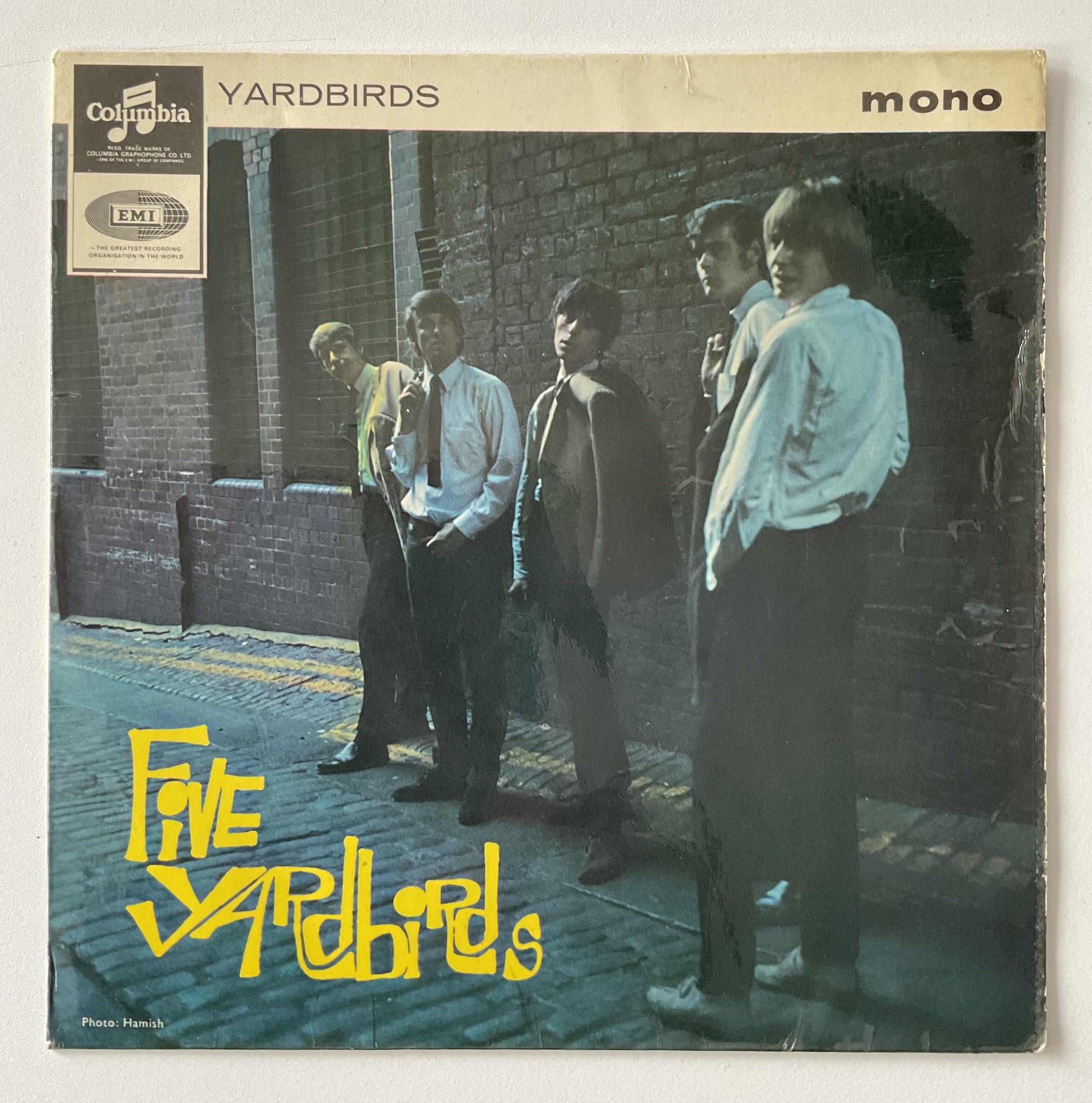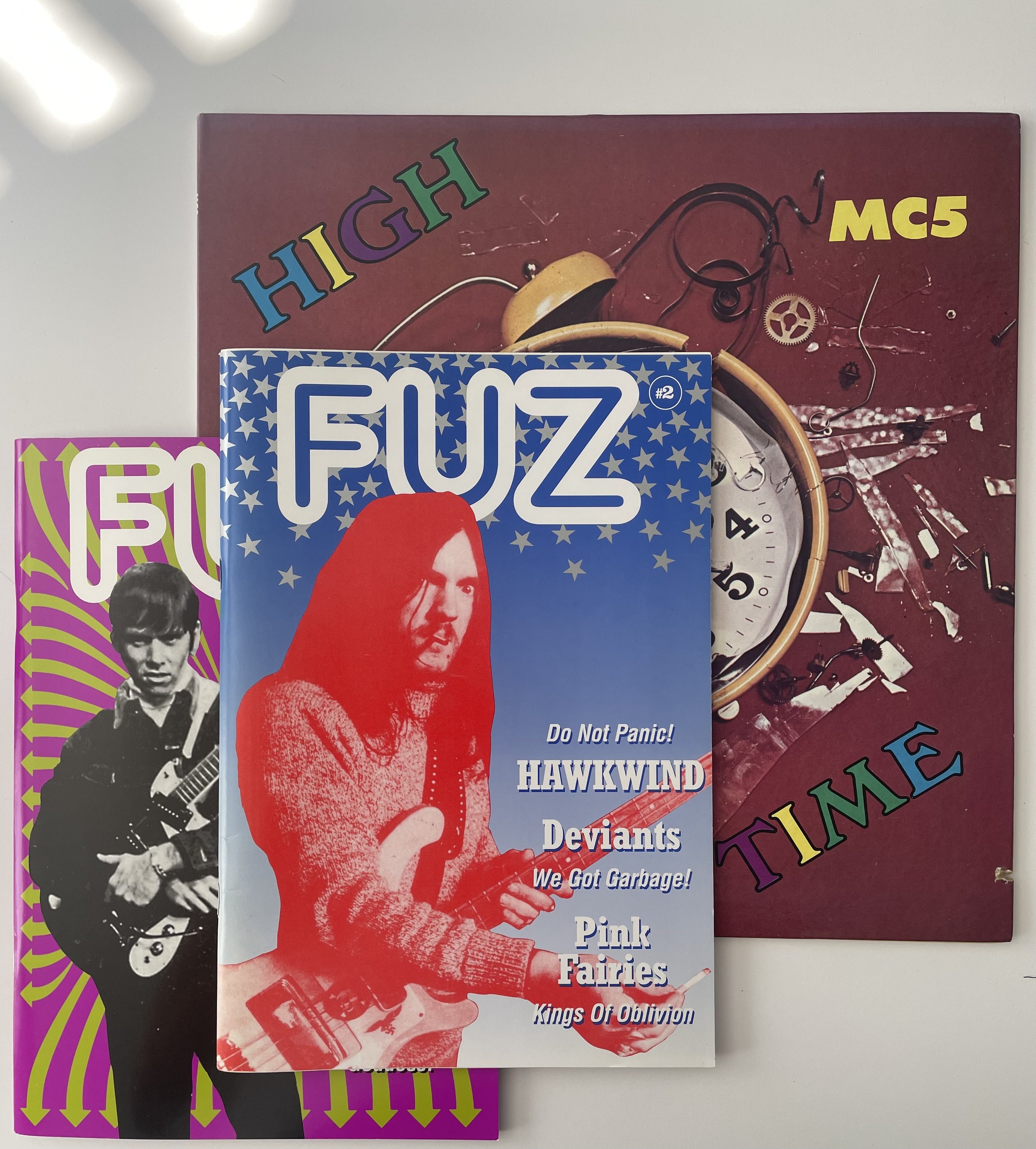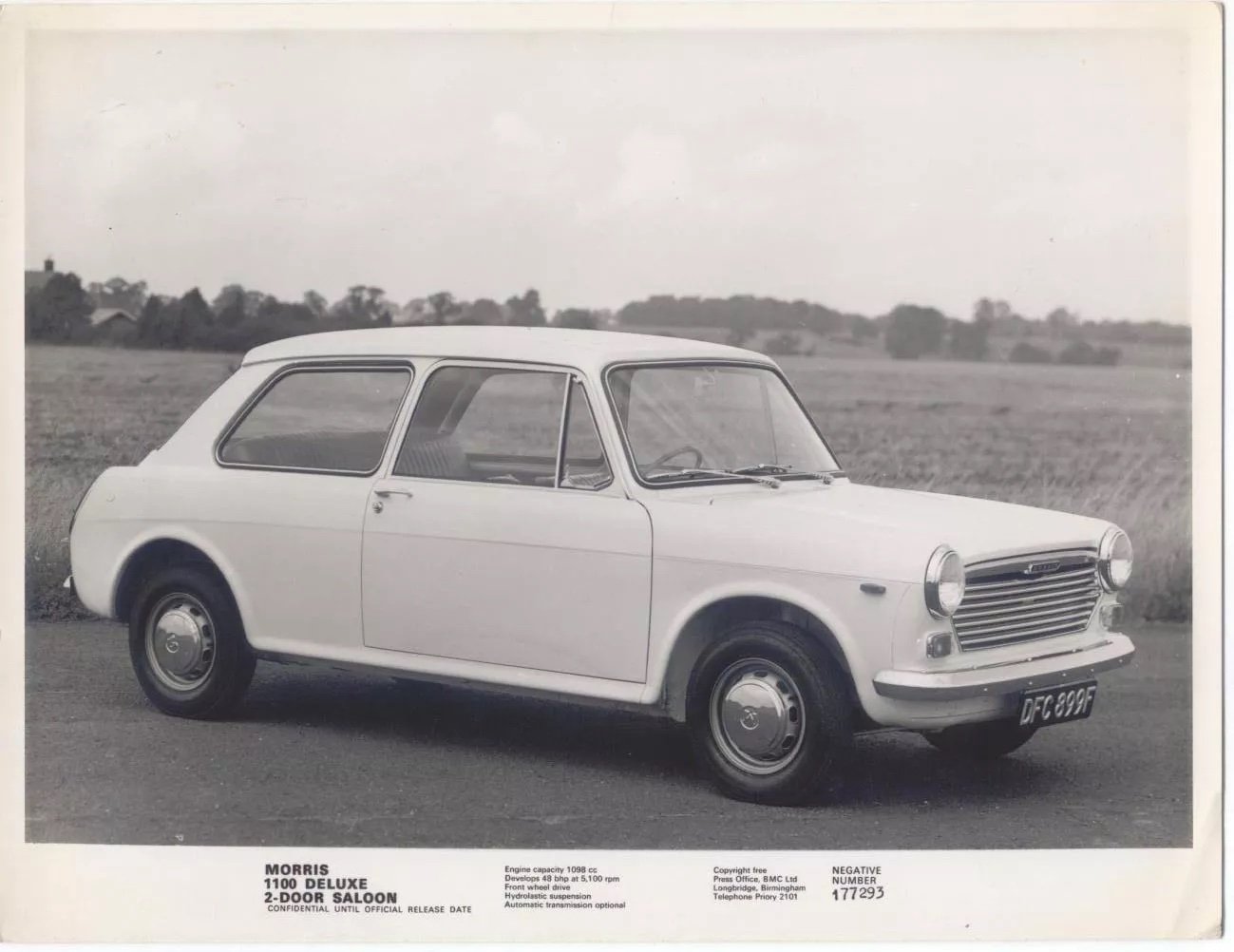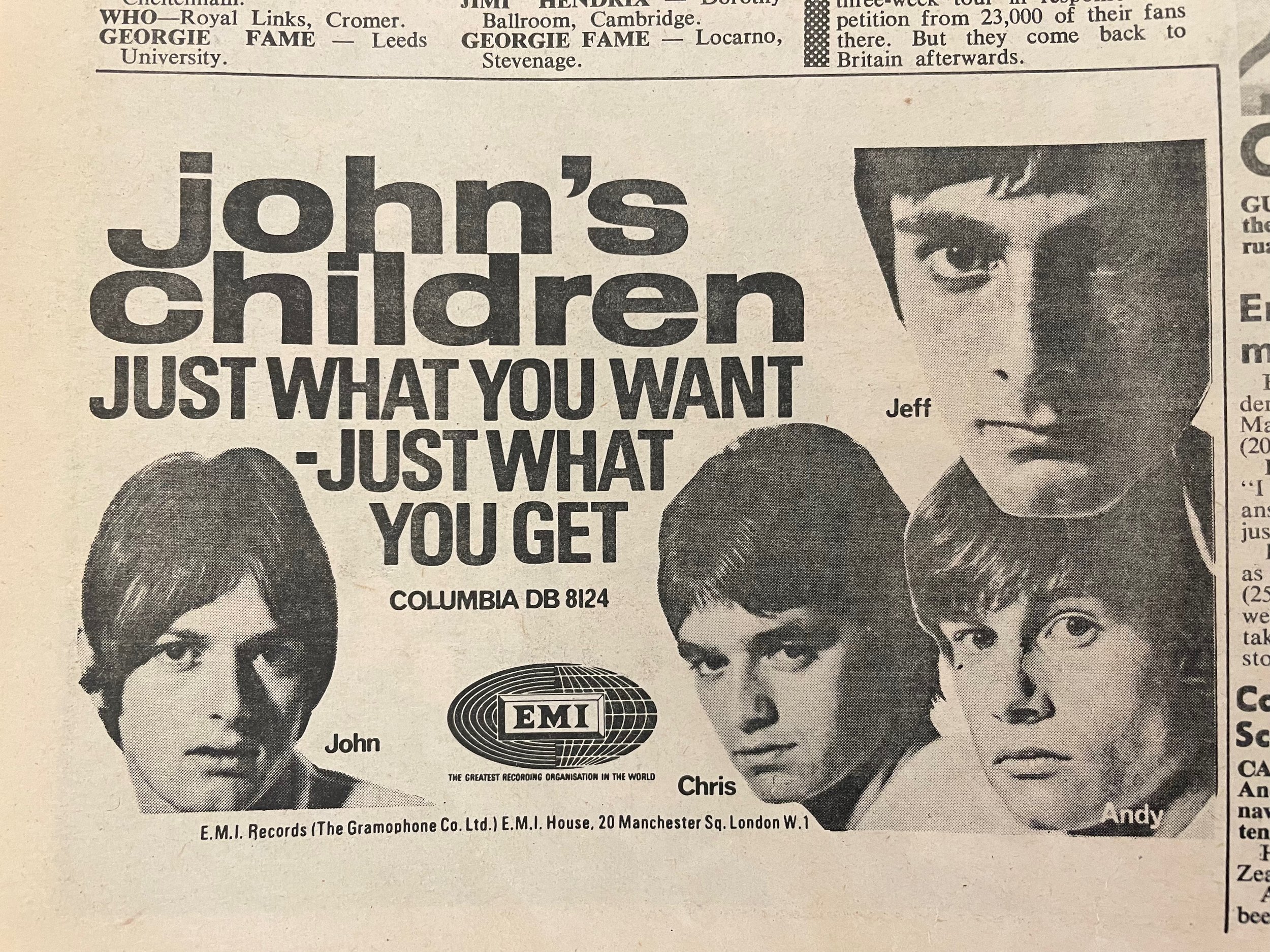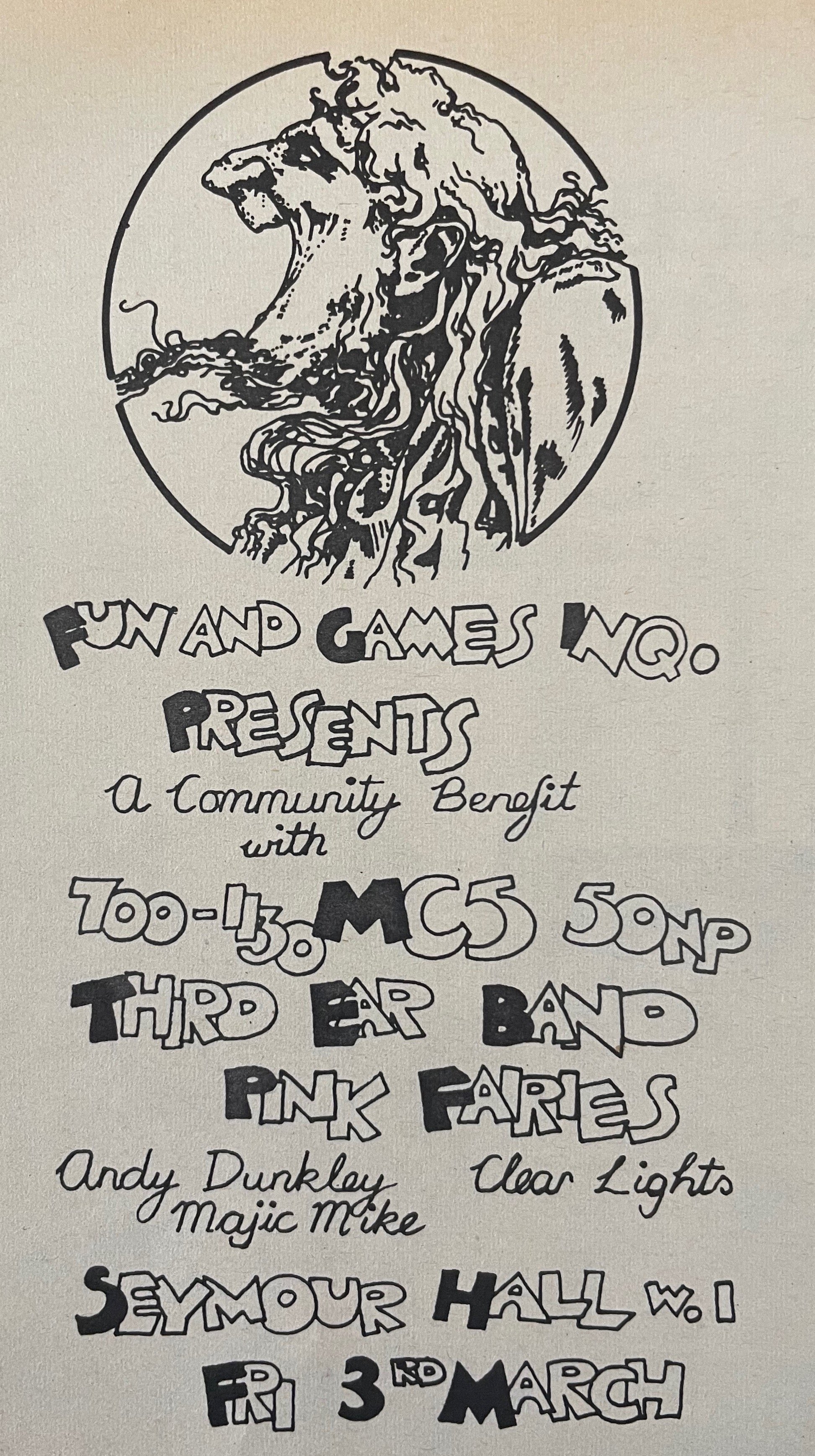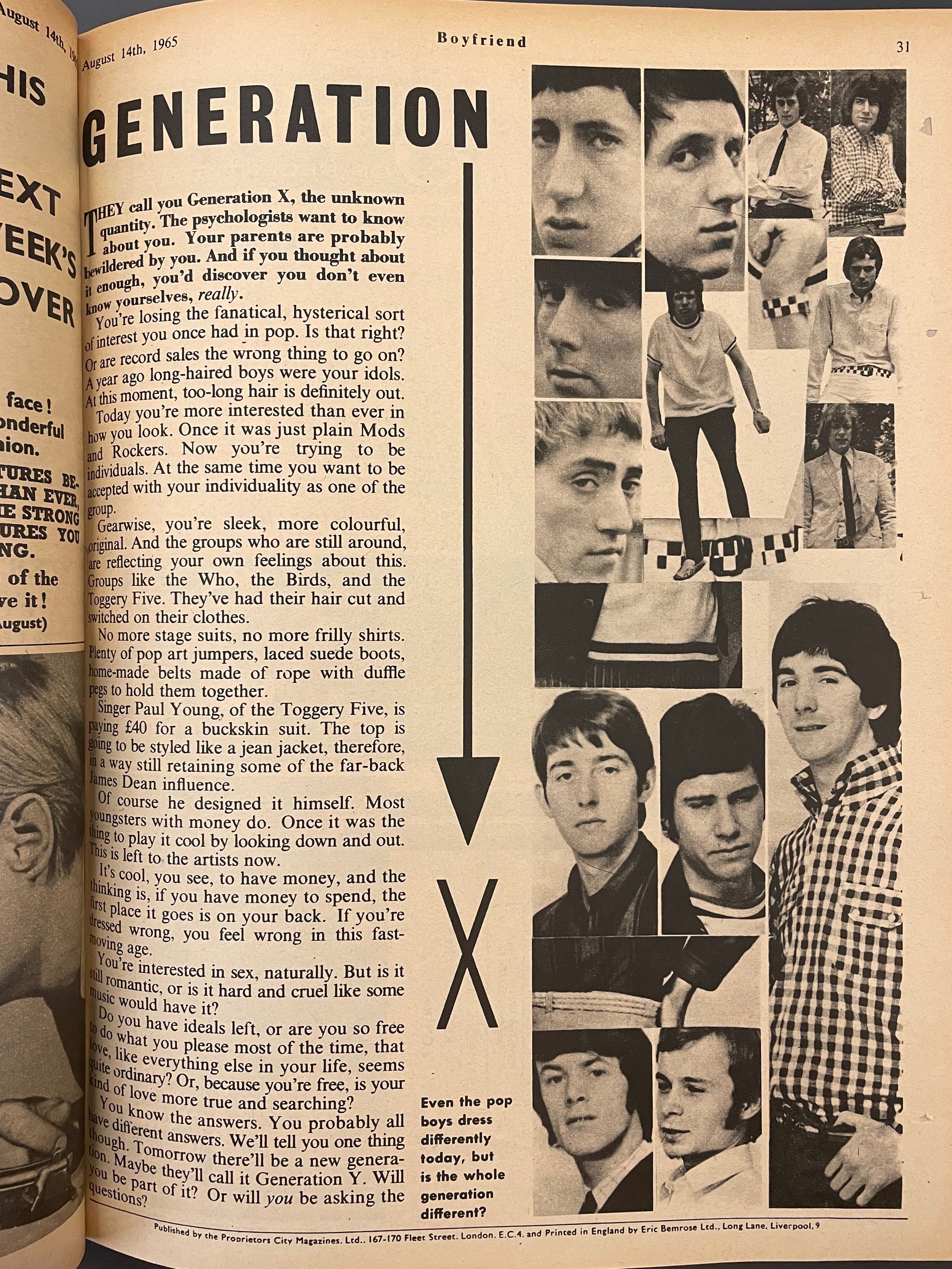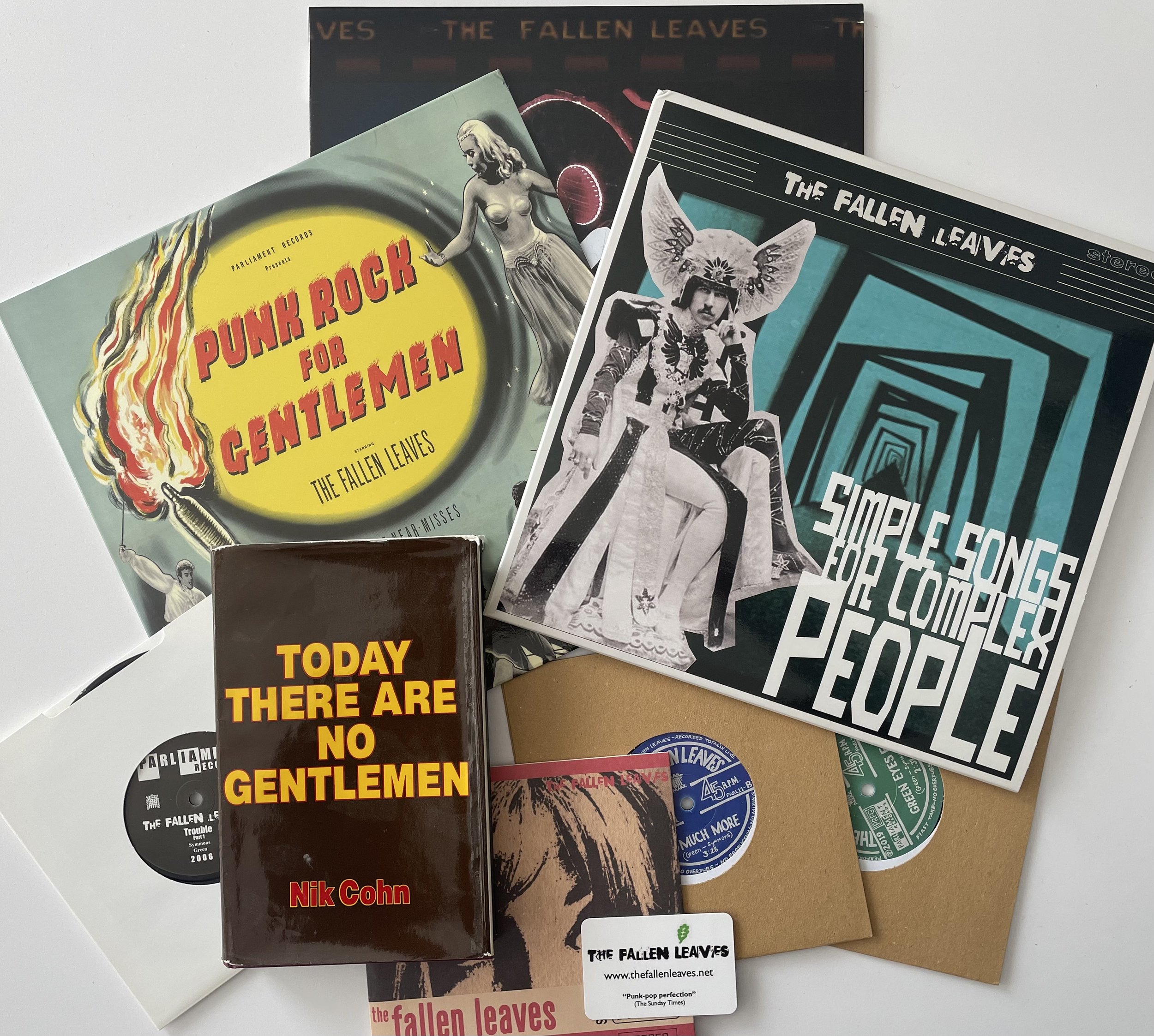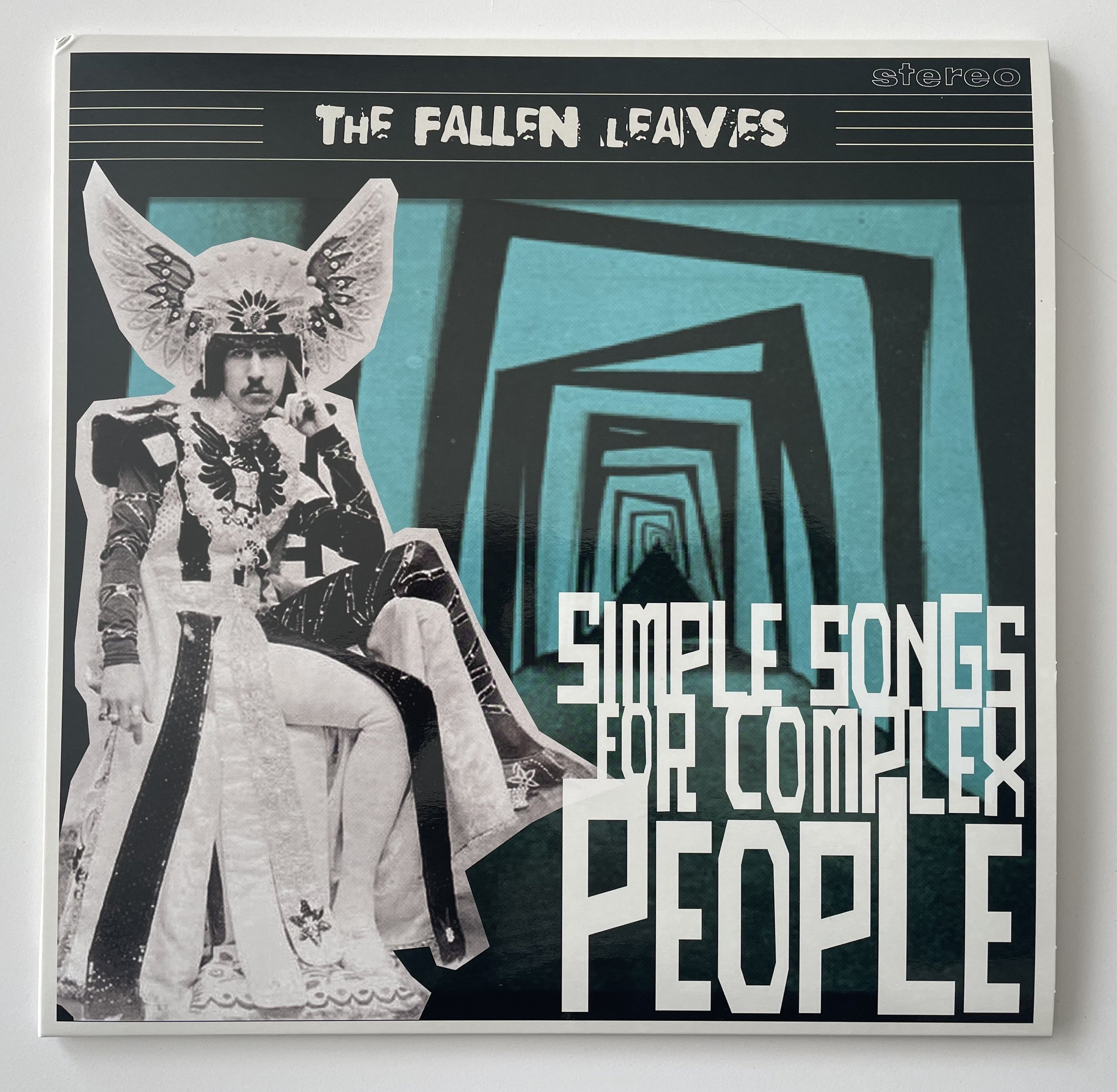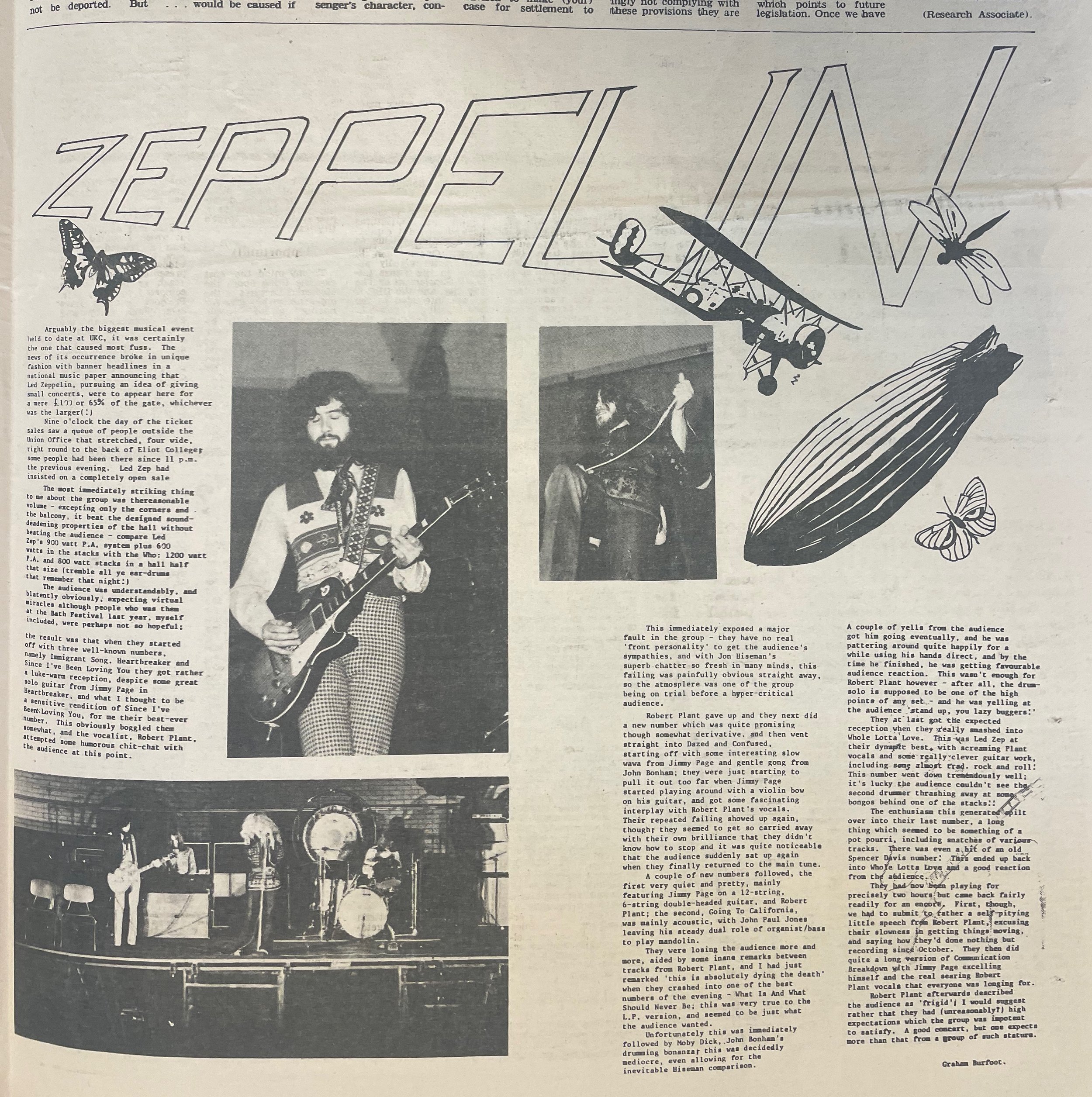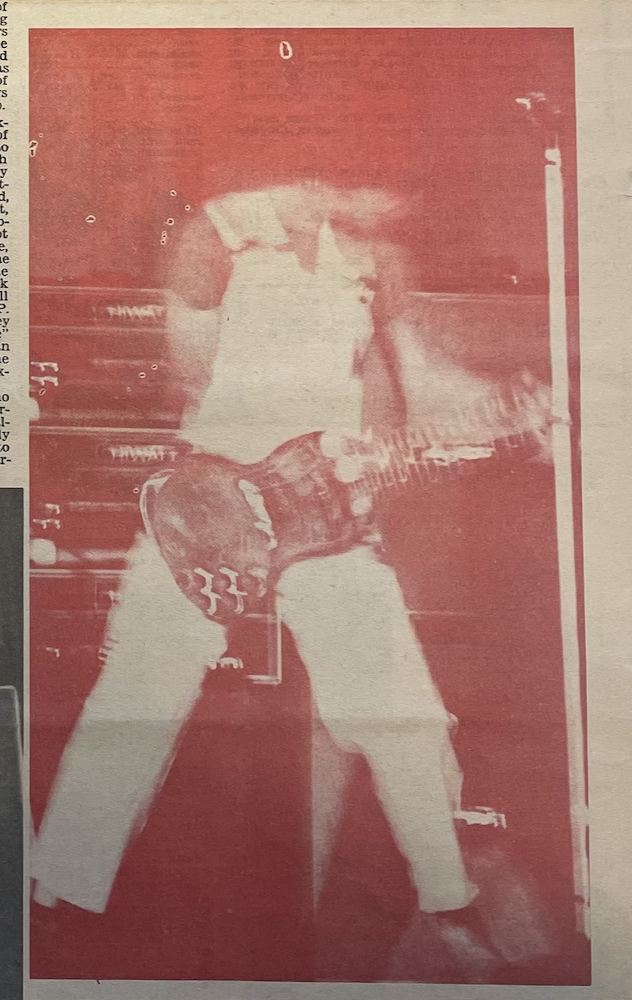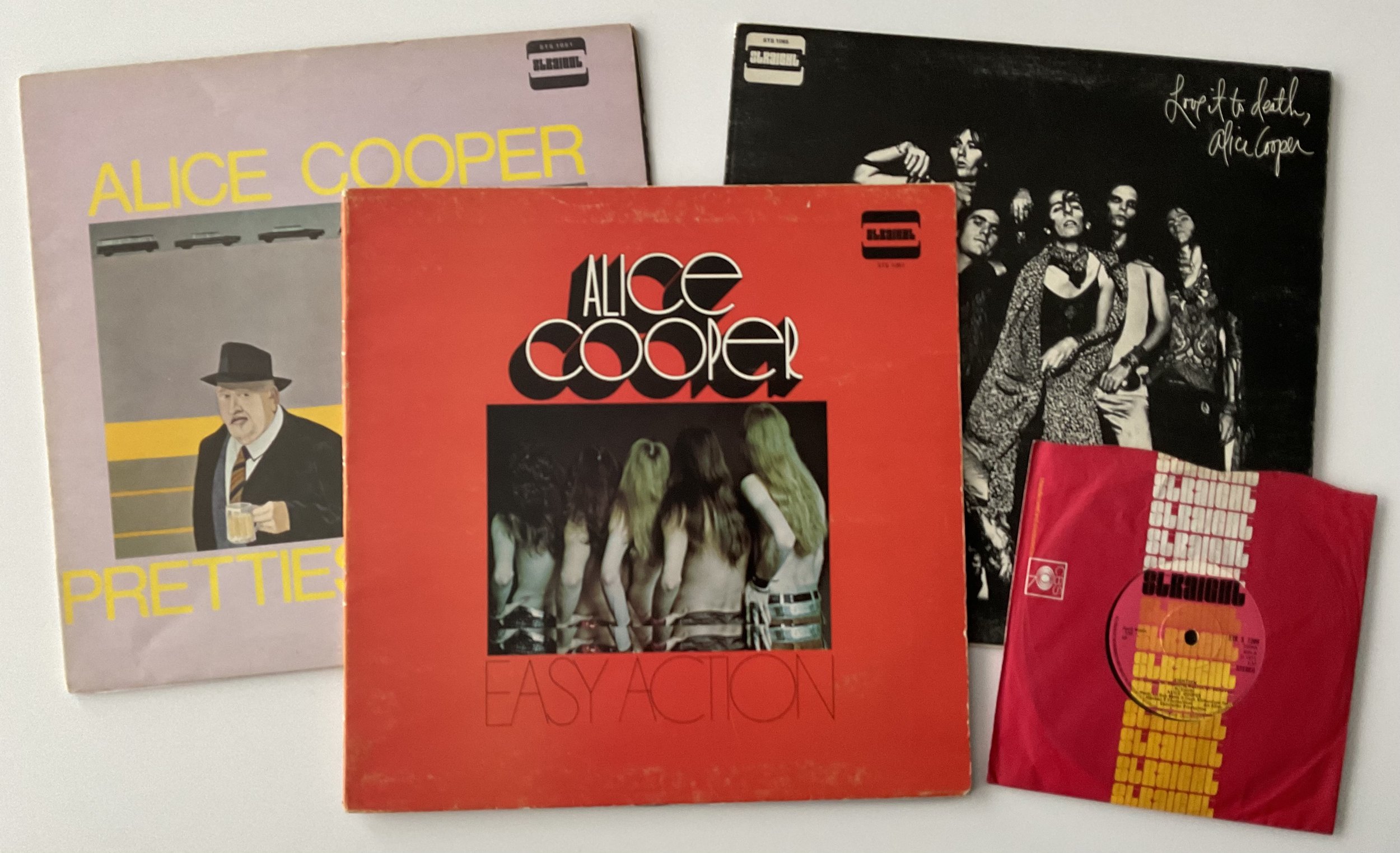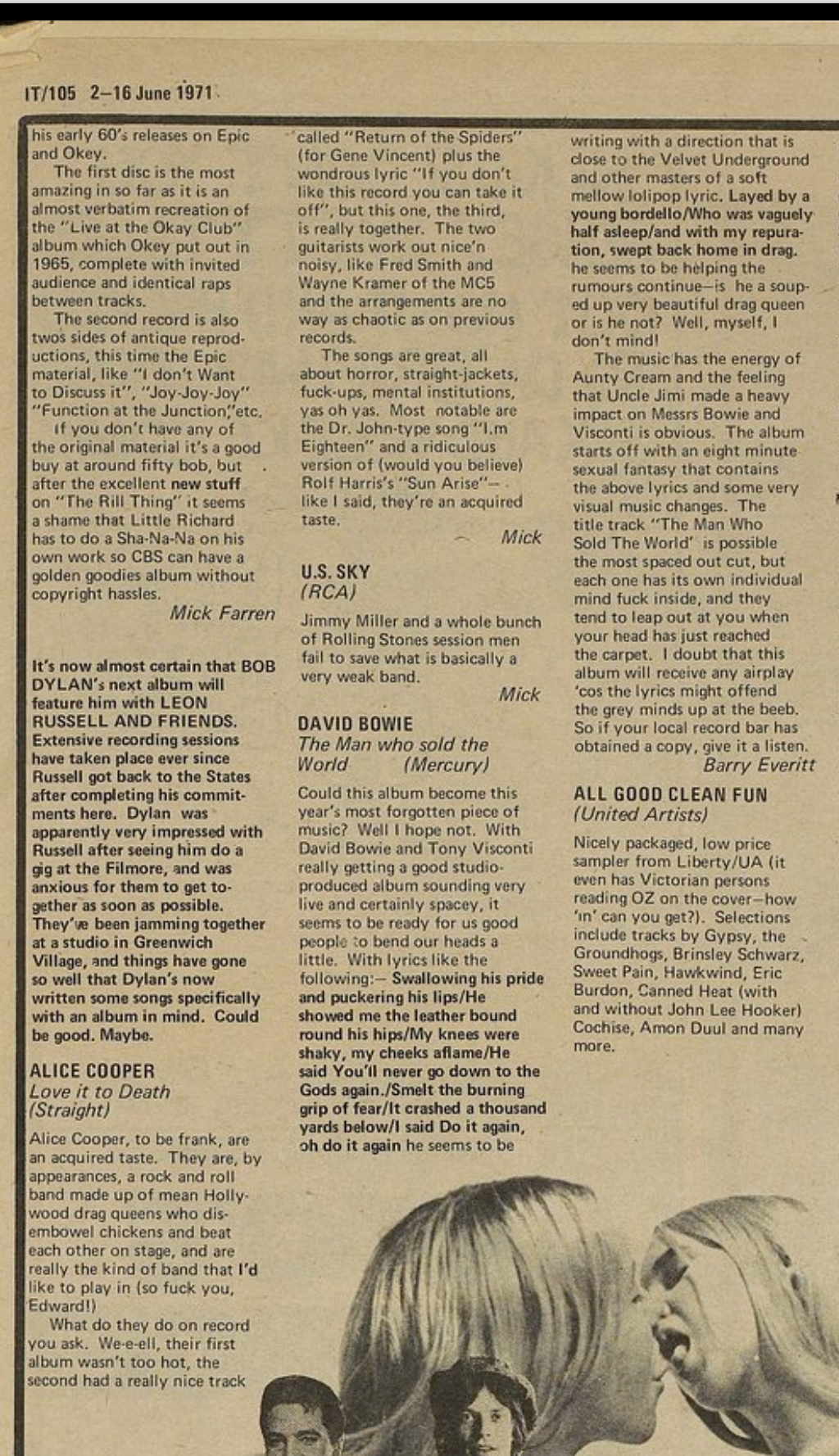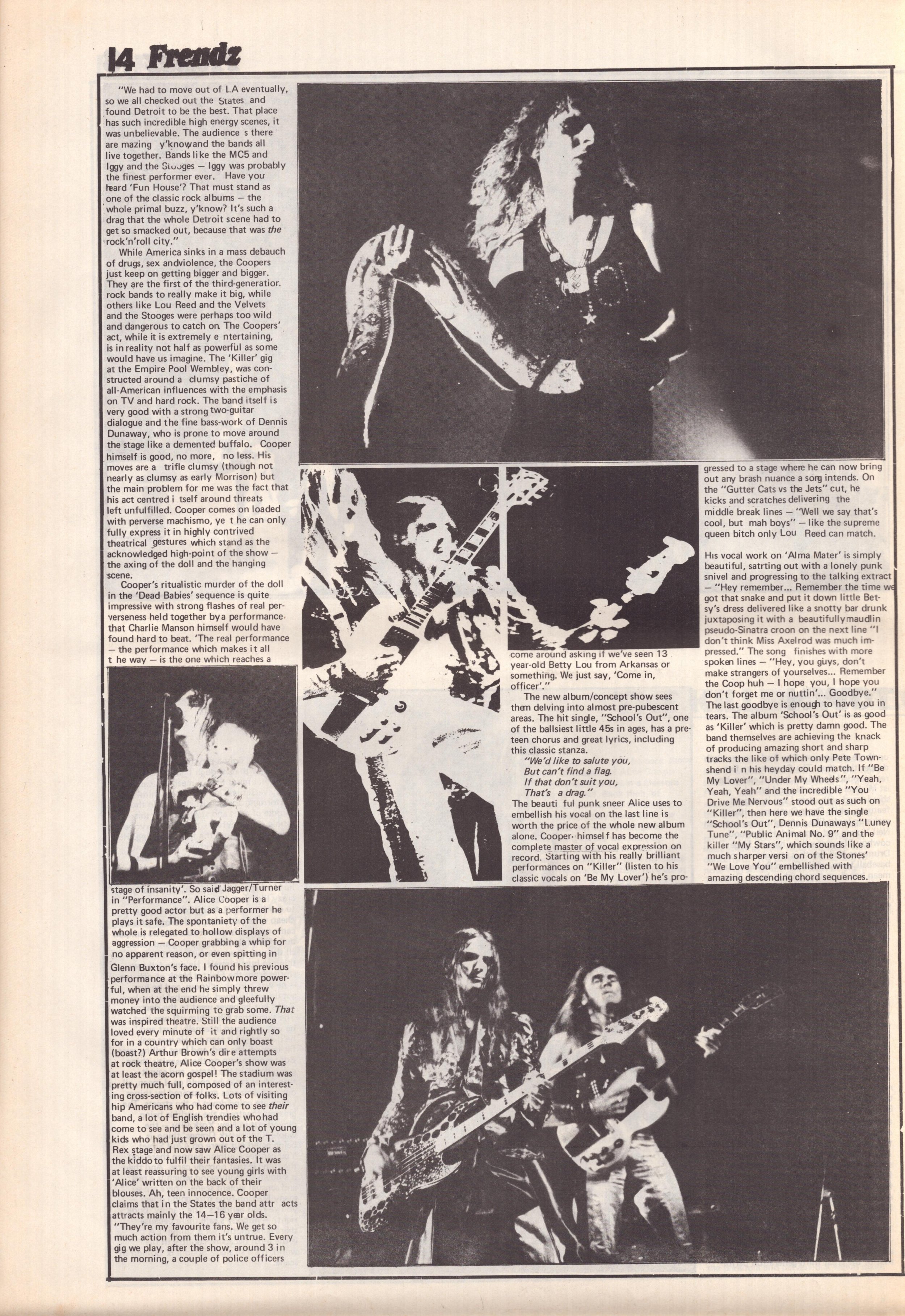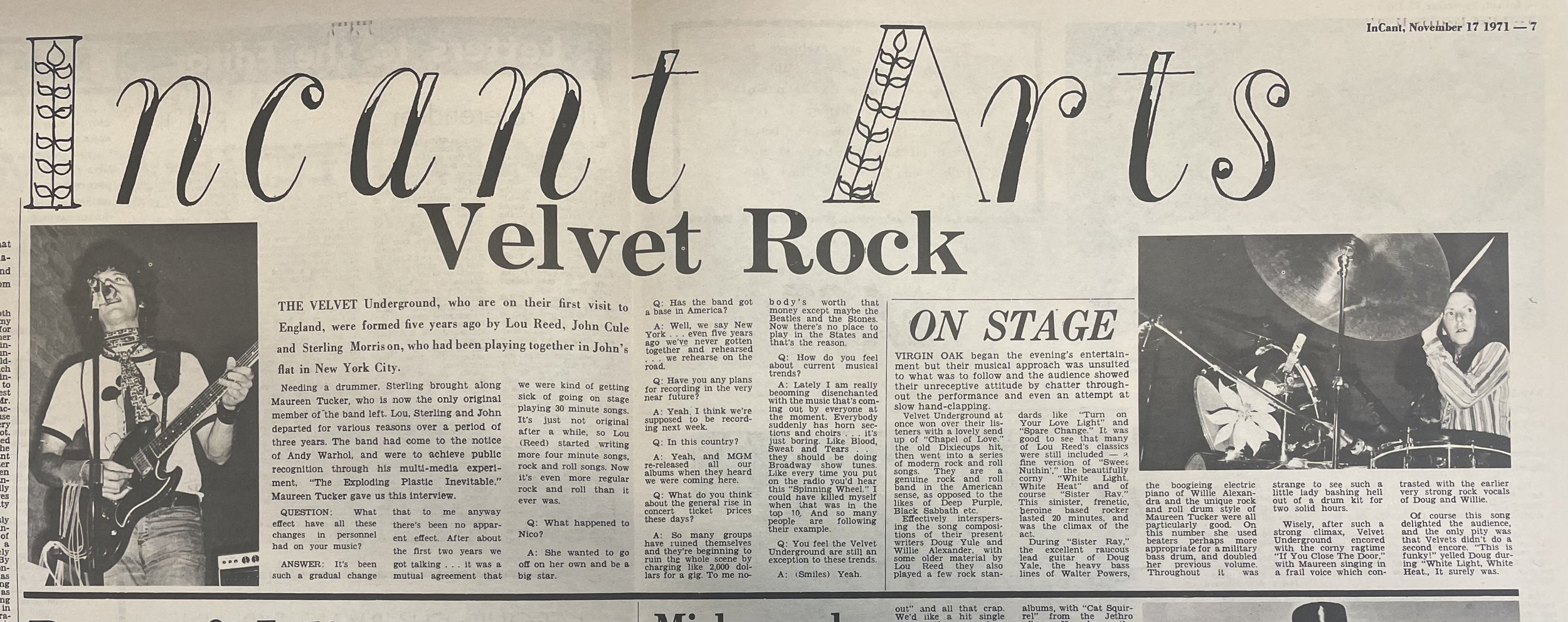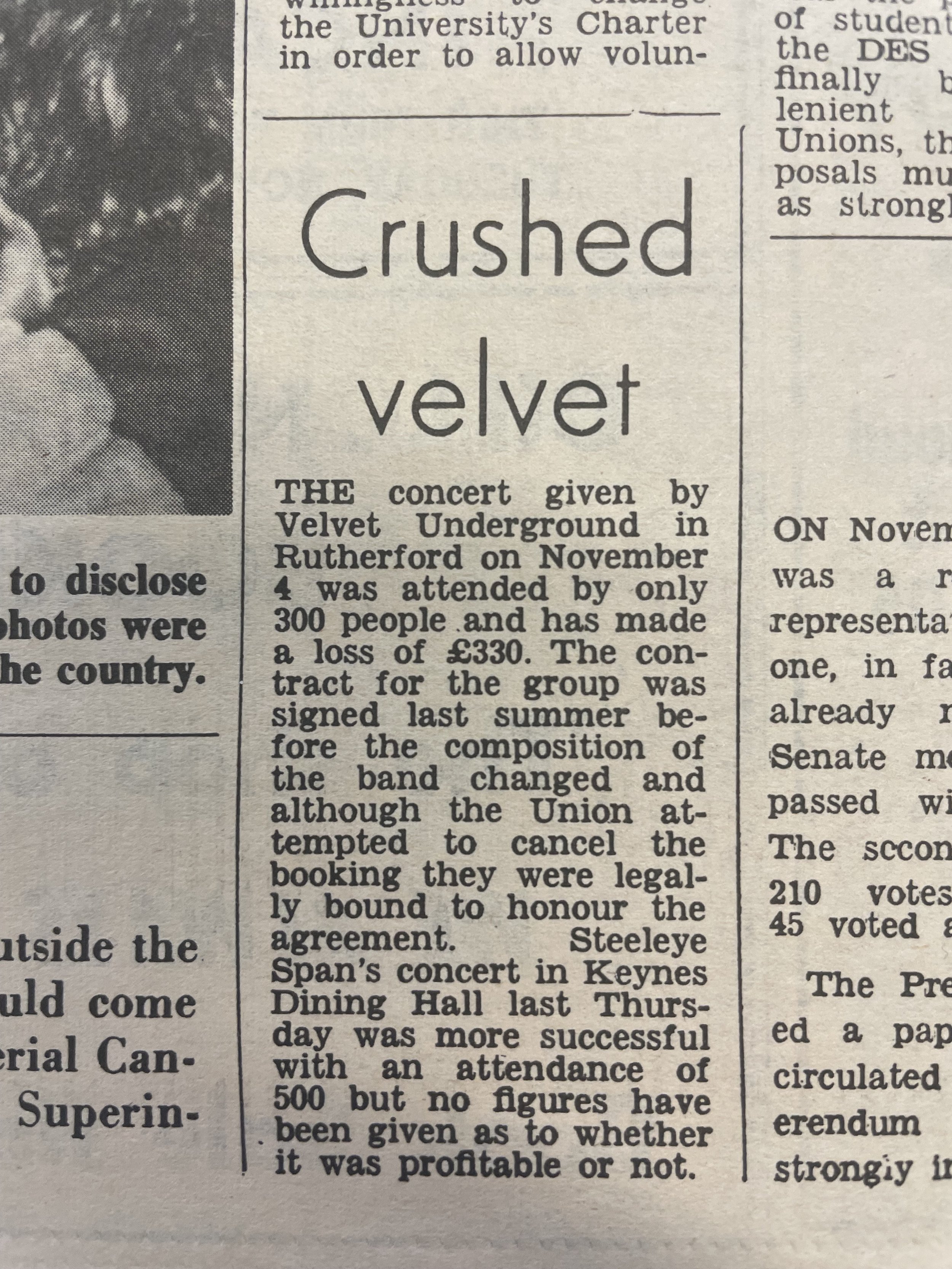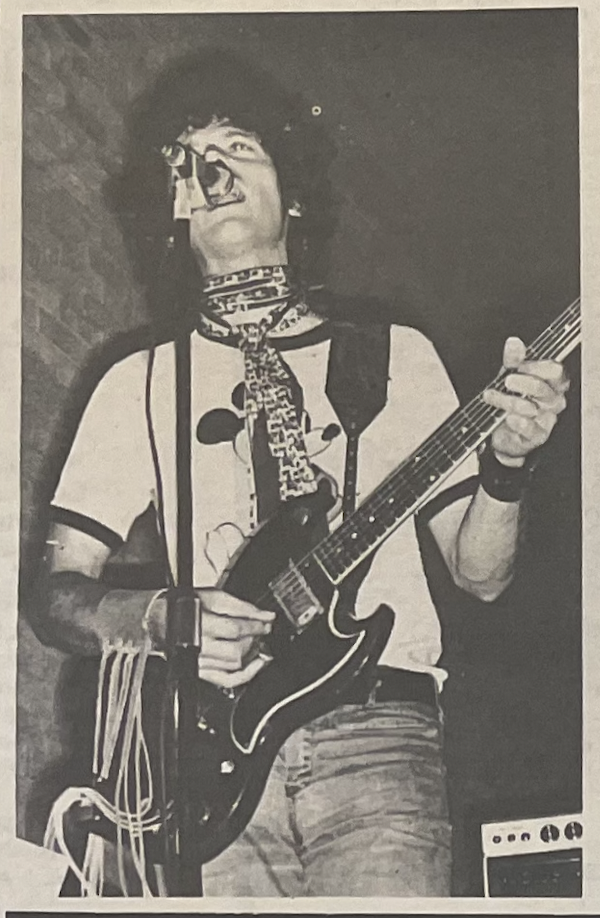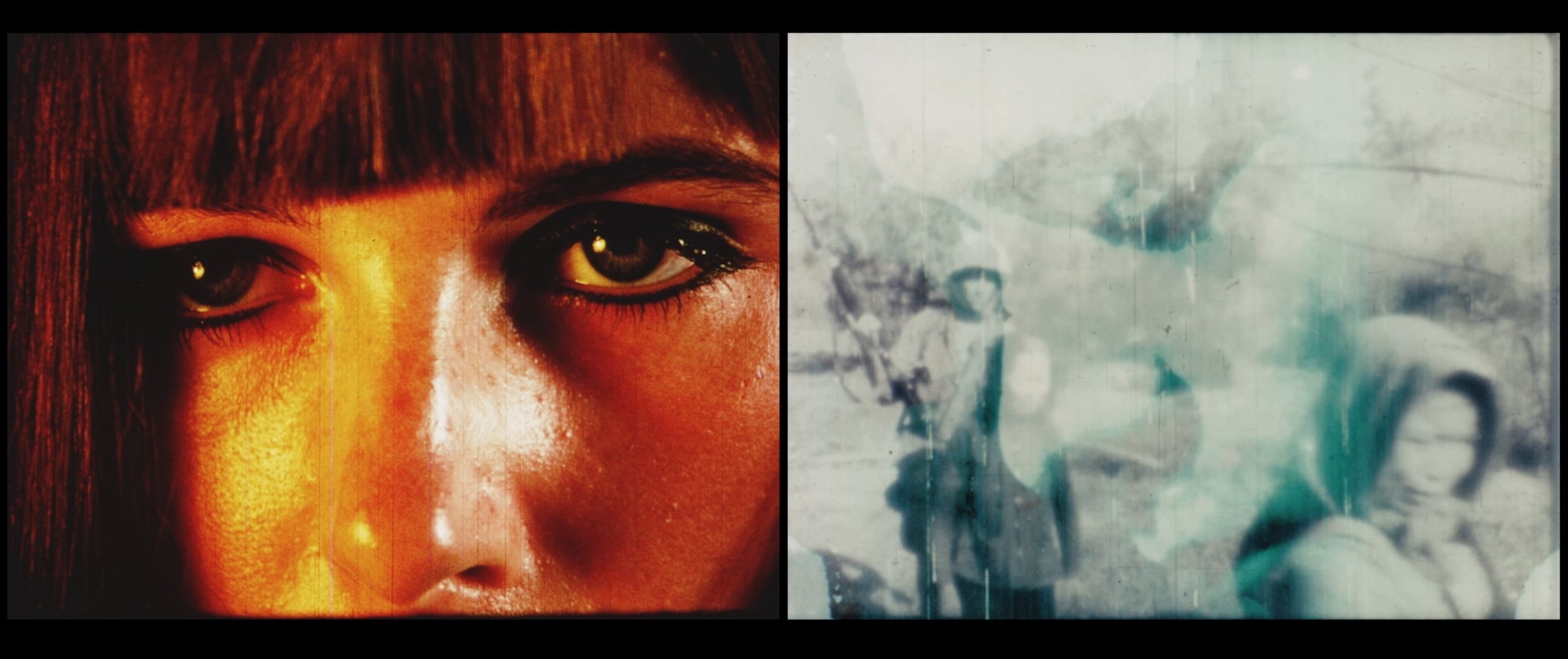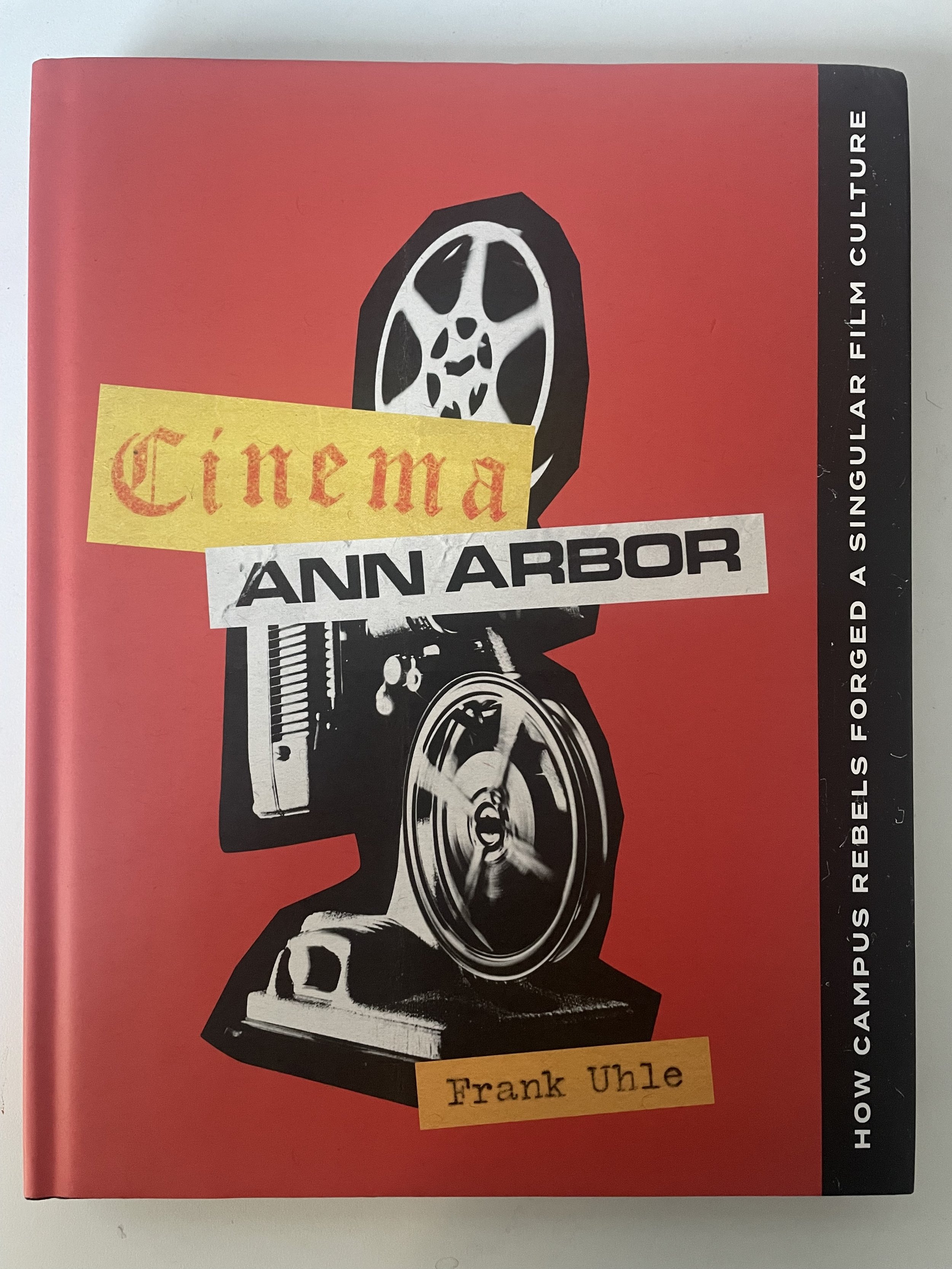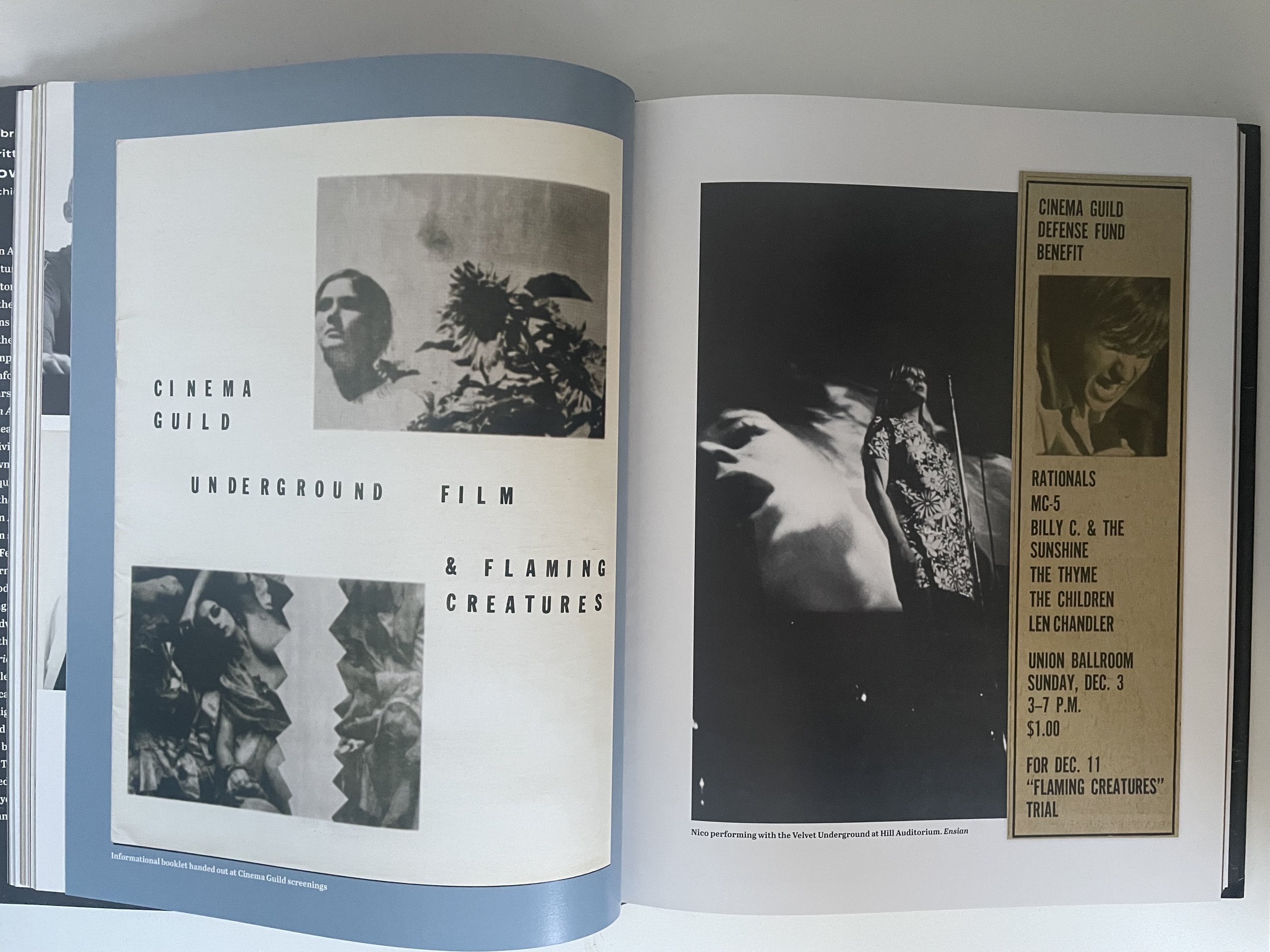Mid-way through 1977, when all the reissues of Stooges and MC5 albums were cluttering up the review sections of the British weekly music press, Miles of Better Books fame (at least I think it is him) offered his take on the Mighty Five and the claim du jour they were Punk’s progenitors – he counter-asserts they were a ‘hippy band’ and Exhibit No.1 in his defence is a ‘Programme’ (English spelling for extra cultural capital) for ‘An Evening Recital of New Music as performed by Detroit’s Own MC5 at the Grande Ballroom May 10 & 11, 1968’.
As a bit of memorabilia it would be nice to own but as a historical document I think it fascinating, produced between ‘Looking At You’ b/w ‘Borderline’ – ‘latest underground killer single’ – and Kick Out the Jams recorded five months later.
In the set they would play in October only ‘Kick Out the Jams’, ‘Come Together’ and ‘Borderline’ from the 14 listed as to be performed in May made it onto the album. Many like ‘Born Under a Bad Sign’, ‘I Put a Spell On You’, ‘Ice Pick Slim’, ‘I Believe to My Soul’ and ‘Upper Egypt’ have subsequently been made available on Total Energy discs, so perhaps there are few surprises here, but seeing just how dependent they were at this stage in their development on covers of familiar blues and R&B numbers – Larry Williams ‘Slow Down’ used ‘by revolutionaries to dissolve inhibitions, cause fucking in the streets & give you “sickness in the mind”’– and an obligatory Dylan tune, suggest they, like The Yardbirds, were struggling to create their own songs while still cleaving something wholly original out of the found material.
‘Riot, Punk and Revolution Rock' . . .’ (March 1977)
I’d love to hear what they did with John Coltrane’s ‘Tungi’ [sic. I think that should be ‘Tunji’] – I also love that they give you the album cat. no’s. for both the album’s mono and stereo versions; as they do too for Pharoah Saunders’ Tauhid. From that album comes ‘Upper Egypt’, which they don’t directly cover but use for inspiration (you can hear a version on the CD of the Sturgis Armory show from June 1968). It works in the same way that ‘Starship’ would draw on Sun Ra, I suppose, or ‘Ice Pick Slim’ pulls on Archie Shepp.
I don’t know how common it was to produce a printed programme for a rock concert in 1968, I’m guessing this is a one-off. It does seem antithetical to being a high energy rock n’ roll combo that the Five as Punk forbearers were being credited with; it is certainly pretentious though it is not embarrassing, as the NME editorial intervention calls it. I think of it as a testimonial to the band’s genuine ambition to expand the music they loved in ways that stayed true to both rock n’ roll and to the moment they were working within.
‘Black to Comm’, the programme noted, had been part of the band’s set since 1964 and was responsible for forcing out their original rhythm section, because:
In those days it was difficult to relate to new forms. The people could dig exaggerations of existing forms but new founding concepts were intolerable. Even today in some places where we play, it often gives people an excuse to dislike us.
Sounds (May 28 1977)
Sounds (March 12 1977)






